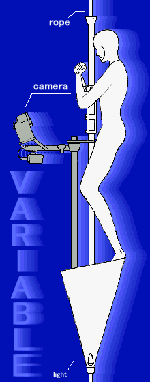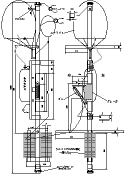THE COMPETITION OF APNEA
There are 2 different forms of performance in AIDA Apnea competitions at
present.
Both are performed holding your breath. This requires practice and control
of the mind.
They are Static and Constant weight disciplines.
Other disciplines of apnea are Dynamic, Variable weight and No Limits.

Are you familiar with Jacques and Enzo diving with the machine in the movie
"The Big Blue"? Japanese people may have seen this and learnt about apnea.
That movie was a fictionalized (not truly factual) account of the life of
Jacque Mayol, the first man to reach 100 metres holding his breath. That
performance was in the No Limits discipline, and is not recognized by AIDA
(Association International of Apnea Disciplines) as it is extremely
dangerous. There is a diver in America - a Cuban named Pipin Ferarras - who
performs this discipline for world records and scientific study.
We will explain all the Apnea performances.

- Static apnea
- It is a performance to see how long the diver can stop breathing face down
in a pool.
In competition, a diver nominates how long they think they could hold their
breath. They achieve a point for every 6 seconds they accomplish, provided
they do not go into unconsciousness. If they do, they are disqualified.
Divers have achieved 6-7 minutes at this discipline, but in competition,
4-6 minutes is more common. . It must never be tried alone. Death will
result!!!
- Dynamic Apnea
- Dynamic apnea is where a diver swims horizontally along a pool with fins, to
see how far they can swim. Two points are awarded for every metre the diver
swims holding their breath in a 25 or 50 metre pool.
This form of apnea diving is not yet a part of the World Cup, but may be
included in the future, as it was performed in competition in the Red Sea
Dive-off in July 1999.
It provides an exciting performance for spectators, compared to other
disciplines.
- Constant Weight
- Constant is the most natural diving style with a mask and fins, and is the
form used by spearfishers around the world to catch fish. A diver must swim
down and back to the surface with the same weight with no assistance. No
touching the rope is allowed. A point is awarded for every metre that the
diver descends safely and returns.
Weights can be chosen by the divers, but cannot be discarded during the
dive.
- Variable Weight
- The diver uses a sled or weights to descend for the dive, but must swim
freely back to the surface under their own power using only fins - just as
for Constant weight.
This discipline is not in competitions as it is more dangerous than Constant
Weight.
- No Limits.
- The diver using a weighted sled descends very rapidly - under the control of
a brake - and surfaces using either a lift bag filled with air, or a small
bottle of air enclosed into the back of the wetsuit for assistance. Depths
of 130+ metres have been achieved, but the dangers are extreme and it is not
recommended for anyone except the experts of the sport of apnea diving.


Sled




